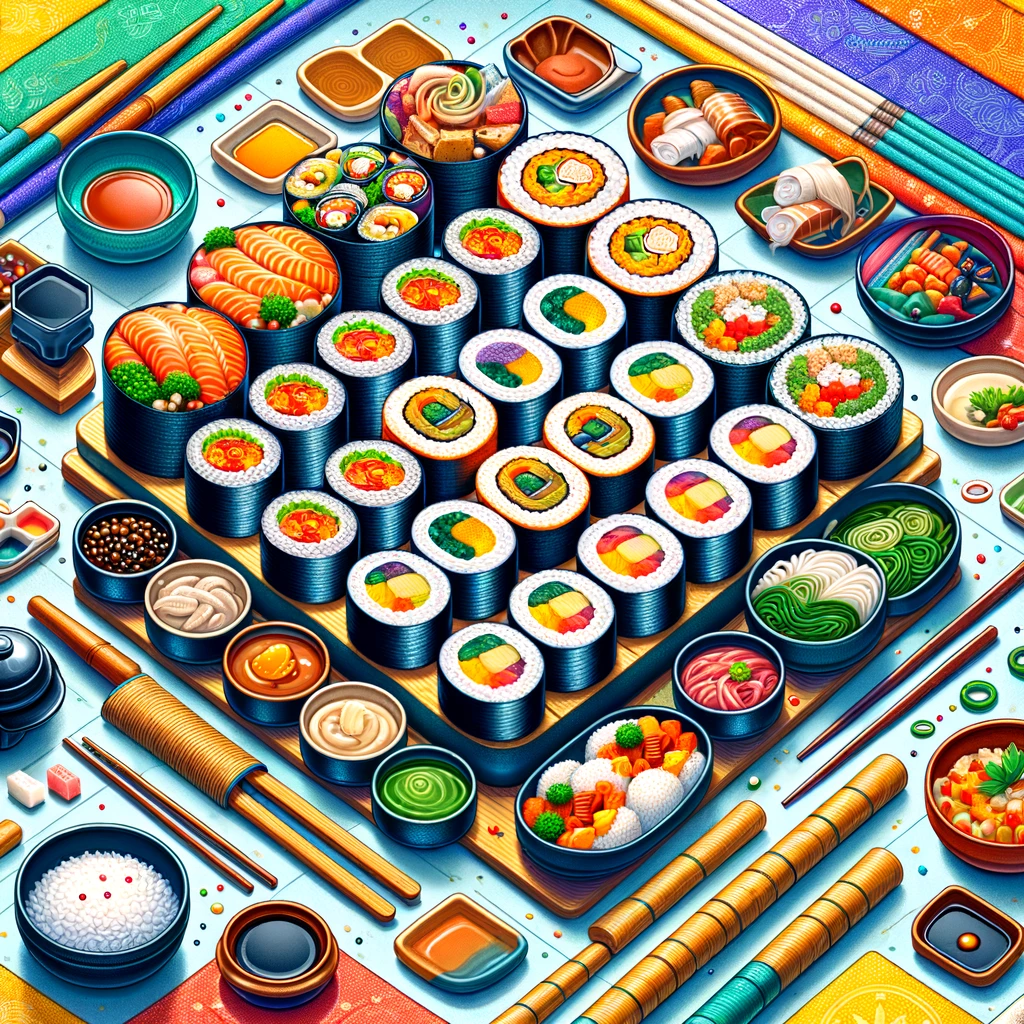Unraveling the Delights of Gimbap: A Culinary Journey
Description: Dive into the delicious world of Gimbap, Korea's beloved seaweed rice roll. Explore its origins, variations, and the art of making it in this comprehensive guide. Perfect for food enthusiasts and culinary adventurers alike.
Gimbap, or kimbap, is more than just food; it's a journey through the heart of Korean cuisine, culture, and communal dining. This article embarks on a culinary exploration, unwrapping the layers of this simple yet profound dish. With its origins rooted deep in Korean history, Gimbap has evolved into a versatile meal that holds a special place in the hearts of many. Join us as we delve into the essence of Gimbap, uncovering its secrets, variations, and how it continues to be a staple of Korean dining. Along the way, we'll share insights, tips, and tricks to creating your own Gimbap feast. So, grab your bamboo mat, because we’re about to roll into the flavorful world of Gimbap!
Gimbap: Korea's Quintessential Seaweed Rice Roll
Gimbap, a harmonious blend of seaweed, rice, and an assortment of fillings, is a testament to the balance and simplicity inherent in Korean cuisine. Each component of Gimbap plays a pivotal role, from the glossy, toasted seaweed that wraps around the perfectly seasoned rice to the vibrant, crunchy vegetables and savory proteins that fill its core.
The Rich Tapestry of Gimbap's History
Delving into the history of Gimbap, we find its roots intertwined with the agrarian lifestyle of ancient Korea. Originally conceived as a portable meal for farmers and travelers, Gimbap has traversed through time to become a beloved snack, picnic staple, and party food. Its evolution mirrors Korea’s own journey, adapting through dynasties, modernization, and globalization, yet remaining quintessentially Korean.
Decoding the Art of Gimbap Making
The art of making Gimbap is a dance of precision, balance, and patience. Every roll is a canvas, each ingredient a stroke of color adding to the masterpiece. The key lies in the rice—seasoned with sesame oil, salt, and a hint of sugar, it must be cooled to just the right temperature. The fillings, ranging from spinach and carrots to eggs and beef, are prepared with care, each adding its unique texture and flavor.
Variations on a Theme: Exploring Gimbap's Diversity
Gimbap revels in its versatility. From the classic Gimbap, brimming with vegetables and beef, to the more adventurous Tuna Gimbap or the indulgent Cheese Gimbap, there’s a variation for every palate. Regional specialties add another layer of complexity, showcasing local flavors and preferences, making Gimbap a dish that’s constantly reinventing itself.
Gimbap in the Modern Korean Kitchen
In today’s fast-paced world, Gimbap holds a special place in Korean dining culture. It’s both a nod to tradition and a testament to the adaptability of Korean cuisine. Easy to make, easier to eat, and perfectly portable, Gimbap is the go-to for picnics, lunches, and even as a quick snack. Its popularity transcends borders, finding a place in the global culinary scene.
The Social Fabric of Gimbap
Gimbap is more than just food; it’s an experience, often made together with family and friends, each roll filled with laughter, stories, and shared memories. It’s a celebration of togetherness, a dish that brings people closer, embodying the communal spirit of Korean dining.
FAQs about Gimbap
What makes Gimbap different from Japanese sushi?
Gimbap and sushi might look similar, but they’re distinct in flavors and ingredients. Gimbap uses sesame oil and sometimes sweetened rice, while sushi features vinegared rice. Fillings in Gimbap are often fully cooked and flavored with distinct Korean seasonings.
Can Gimbap be made vegetarian or vegan?
Absolutely! Gimbap is incredibly adaptable. Vegetarian and vegan versions can be just as delicious, using a variety of vegetables, tofu, or even mock meats seasoned with traditional Korean flavors.
How long does Gimbap last?
Gimbap is best enjoyed fresh, but it can be stored in the fridge for a day. To revive refrigerated Gimbap, lightly pan-frying it can bring back some of its original texture and flavor.
Is Gimbap healthy?
Gimbap can be a wholesome meal, packed with vegetables, lean proteins, and carbohydrates. The key is balance and moderation, especially with the rice and any added sauces or seasonings.
Where can I find the best Gimbap in Korea?
Every region, city, and even Gimbap shop in Korea has its unique take on this classic dish. Street markets and specialized Gimbap restaurants are great places to start your quest for the best Gimbap.
Can I customize my Gimbap?
Absolutely! One of the joys of Gimbap is its versatility. Feel free to experiment with different fillings, sauces, and even the type of rice. Personalizing your Gimbap is part of the fun.
Conclusion: The Endless Charm of Gimbap
Gimbap is a dish that encapsulates the essence of Korean cuisine—simplicity, balance, and communal joy. It’s a humble yet profound expression of Korea’s culinary heritage, adaptable to modern tastes and dietary needs. Whether you’re a seasoned Gimbap maker or a curious foodie looking to explore Korean cuisine, Gimbap offers a delicious gateway into the flavors, traditions, and innovations of Korea. So, next time you roll up your sleeves to make Gimbap, remember, you’re not just making food; you’re weaving a piece of Korea’s culinary tapestry.
As we wrap up our journey through the world of Gimbap, we invite you to roll, savor, and share this delightful dish. Whether it's for a picnic under the cherry blossoms, a quick lunch, or a gathering with loved ones, Gimbap is a testament to the joy of eating together, sharing, and celebrating life's simple pleasures. Let's keep rolling, exploring, and enjoying the delicious world of Korean cuisine, one Gimbap roll at a time.

'핫플레이스, 맛집 공부방' 카테고리의 다른 글
| 경기도 남양주 "다산킹찜질방" 놀고 온 후기 (4) | 2025.03.23 |
|---|---|
| 남한산성 몽쥬이에 카페: 숨은 보석같은 카페 (14) | 2024.04.16 |
| 올드페리도넛 명일점 (13) | 2024.03.04 |
| 해피 해피 설날 준비 중 (31) | 2024.02.06 |
| 남양주 모란미술관 (19) | 2023.12.28 |



